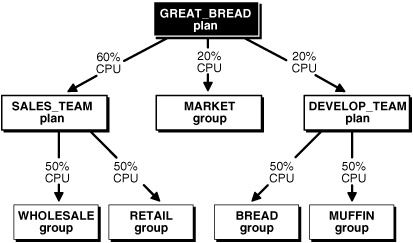18 abr Xero vs QuickBooks: Top Accounting Software

Furthermore, both Xero and QuickBooks provide a free Mobile App for managing your accounting on the move, as well as several Third-Party Integration options. Having said that, you’ll need to know more about each software’s capabilities in order to determine which option is best for your company. QuickBooks Online also gives you the option to have customer payments applied automatically once they’re deposited, or leave that option to the user. More specific categories – Business, Accounting, Payroll, Projects, and more – have their own dashboards, accessible with a horizontal sidebar. You can click any data to see a full, detailed breakdown, complete with historical context, and you can set up data tracking to automatically generate specific reports. Overall, the cheaper cost of Xero’s time tracking abilities is likely to make it the more appealing option, even if QuickBooks includes more features.

Which QuickBooks Online Pricing Plan Is Right For Me?
Finally, the “Uncleared Transactions” Report, which Accountants commonly run to show customers why their balance is lower than what is in the bank, is worth mentioning. In Xero, there’s no option to run this View from the Software’s Reports section. Furthermore, if you wish to run a Detailed Report on accounts receivable or payable, Xero does not provide a mechanism to total the Information by Client or Vendor. QuickBooks Online, on the other hand, makes it simple to get to this type of View.

What QuickBooks Online offers
- But with a free user tier and graduated pricing tiers, teams can use Zoho as they scale with minimal growing pains (so there’s no need to migrate to a different solution).
- The best accounting software received top marks when evaluated across 10 categories and more than 30 subcategories.
- Use the demo company to try things out, or enter your own business details and data to try it out for real.
- Despite not offering unlimited invoices and bills in its base plan, Xero accounting software is a more scalable solution than QuickBooks in the number of users it supports.
- Invite your advisor to work with you on the online accounts anywhere, anytime.
- A cloud accounting tool is one of the most powerful contributors to the day-to-day running of a company.
If you have Windows, you’ll need to be running Windows 7 or newer, with at least 4GBs of RAM and a processor comparable to the Intel Core i5. Both services are available on all the most common devices and browsers. It’s worth noting that QuickBooks https://www.quickbooks-payroll.org/ uses a first-party payment processor, which means that the money goes through QuickBooks, while Xero uses third-party processors, like PayPal or Stripe. Neither of these is better than the other, but it pays to be aware of the differences.
Popular Features

You can simply download the free Xero Projects app on iOS and Android, using it to record time and costs, as well as seamlessly and automatically feed the data into invoices and reports. Premium includes scheduling for jobs and shifts, real-time reporting, custom alerts, and time-off management. Elite offers all of Premium’s features, plus a project activity feed for better control, project estimates that can be easily compared with actuals, geofencing, and support for timesheet signatures. As with QuickBooks, you can use Xero to automatically import and categorize expenses.
Somewhere between Zoho’s grow-as-you-go philosophy and NetSuite’s go-big-or-go-home design, Sage 50 Accounting offers the biggest benefits to midsize businesses. Sage is a provider of a number of business solutions, catering to different operational needs and organization sizes. Managing expenses and business analytics are all included for one low price. We offer phone support, live chat and screen sharing, all free of charge. Technology Advice is able to offer our services for free because some vendors may pay us for web traffic or other sales opportunities.
You’re our first priority.Every time.
QuickBooks also allows you to accept payments from debit or credit cards, as well as ACH payments, Apple Pay, PayPal and Venmo. The QuickBooks Advanced plan costs $200 per month, supporting 25 users. Its standard features include creating invoices from the mobile app and customizing invoices with your company logo and branding. Like most platforms, you can also use QuickBooks to view invoice payment status and remind clients to pay their bills. Other standard features include one-click payments, recurring payment invoices, adding billable hours to invoices and converting estimates into invoices. It also supports batch importing, to help a single user create, edit, and send multiple invoices, checks, expenses, or bills.
Plans start at $15 per month for up to 20 invoices, five bills, bank account reconciliation, receipt capture and short-term cash flow snapshots. Its $78-per-month plan also includes multiple currencies, project tracking, in-depth analytics and employee expense claims. Once your business is large enough to require more automation and more employees, the Plus Plan likely makes sense, as it allows for recurring payments in addition to time tracking. It also includes inventory tracking, making it a must for an operation that sells more than a few products. Due in part to these reasons, QuickBooks is our pick for the best hospitality accounting software.
Hence, it’s no surprise that QuickBooks Online is our overall best invoicing accounting software. One user expressed that they like that QuickBooks do you record income tax expenses in journal entries has more robust accounting features than most competitors. Some also explained that QuickBooks offers excellent expense-tracking features.
The custom price varies depending on the size of your business but should be somewhere between $200 and $600 per month. The QuickBooks Payroll software tracks employees by name, pay rate, pay method, https://www.business-accounting.net/how-to-plan-create-budgets-budget-variance/ and current status. Our researchers ranked it the highest overall with a research score of 4.7 points out of 5, meaning that it’s the top pick for the average business, small or large.
Just keep in mind that unlike the inventory feature in QuickBooks Online’s higher-tier plans, Xero doesn’t let users set up reorder points that flag when stock is running low. All plans include 24/7 live chat support; phone support is available 5 a.m. For example, when you purchase the Pro Plus Desktop plan, you can have up to three concurrent users but each of those users must pay for their own account (at $349.99 each per year). Its Online version allows up to 25 users at no additional cost, provided you’re paying for the Advanced plan. Another key difference between the two companies is the maximum number of users it allows.


No Comments